Lucidea’s Lens: Knowledge Management Thought Leaders Part 63 – Nick Bontis

Stan Garfield

Nick Bontis is Chair of Strategic Management at the DeGroote School of Business, McMaster University in Hamilton, Ontario, Canada.
He is also the Director of the Institute for Intellectual Capital Research, a management consulting firm and research think-tank that specializes in conducting human capital diagnostic assessments for corporate and government clients.
His research focuses on business performance, intellectual capital, knowledge management, organizational learning, collaboration, human capital measurement, and digital transformation. Nick has expertise in leadership and productivity, management of change, information overload, knowledge sharing, innovation and creativity, team collaboration, and talent retention.
Selected Books
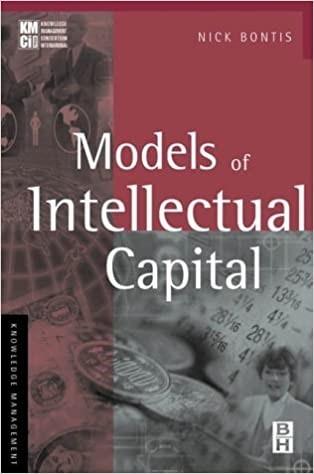
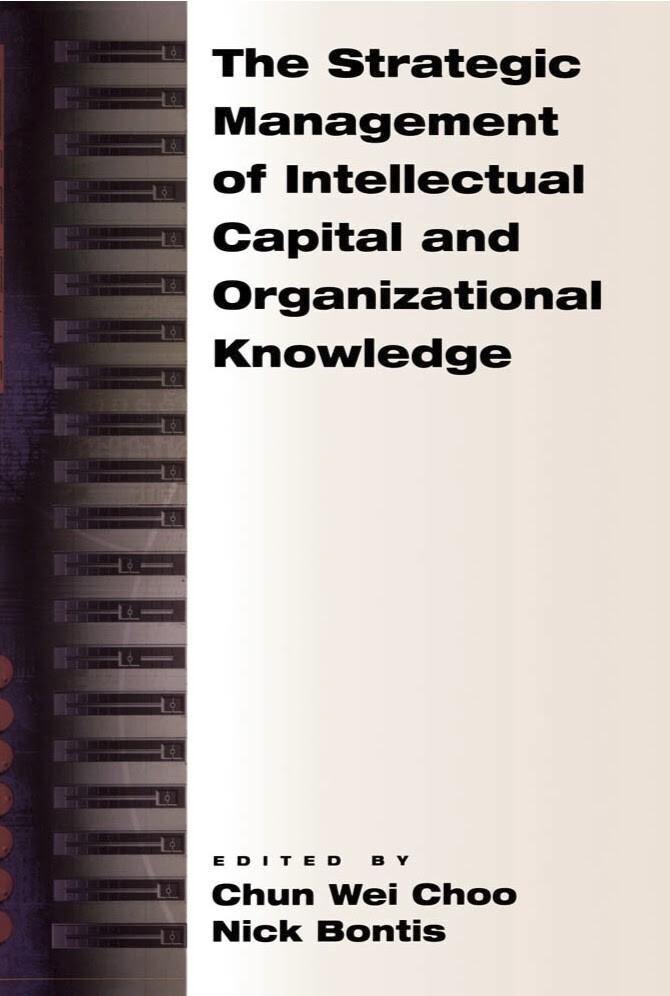
Intellectual capital ROI: a causal map of human capital antecedents and consequents
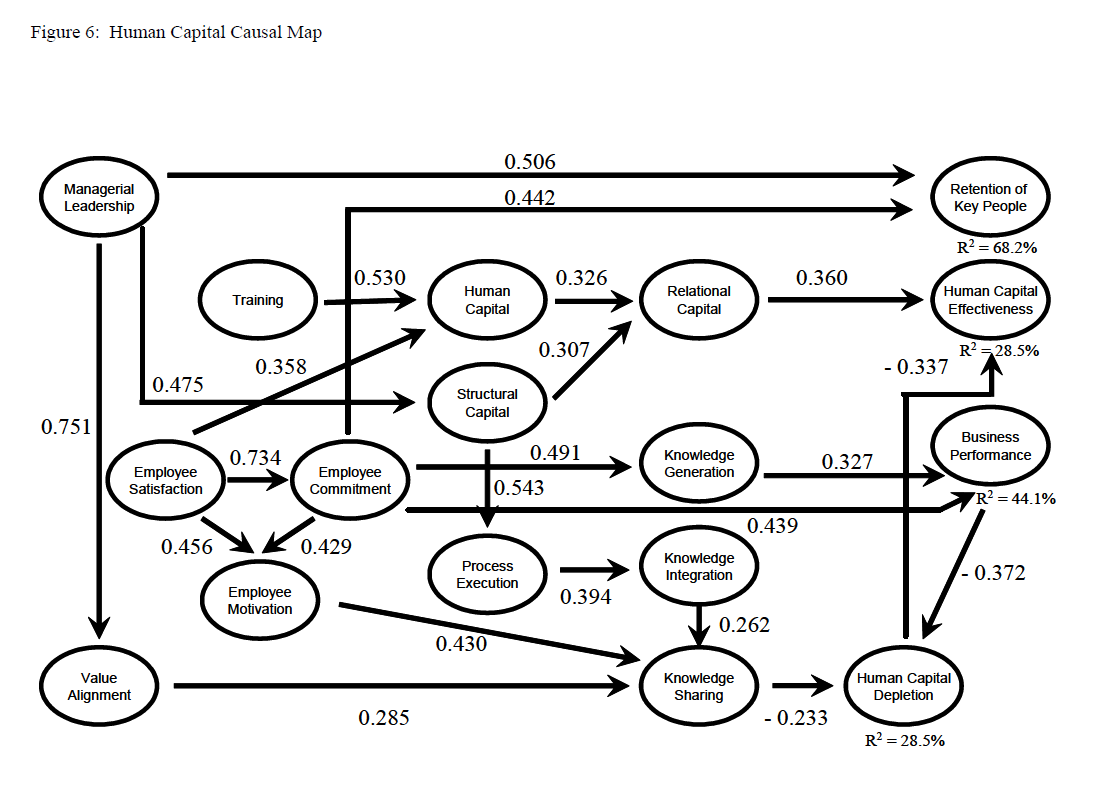
KM 101 Workshop

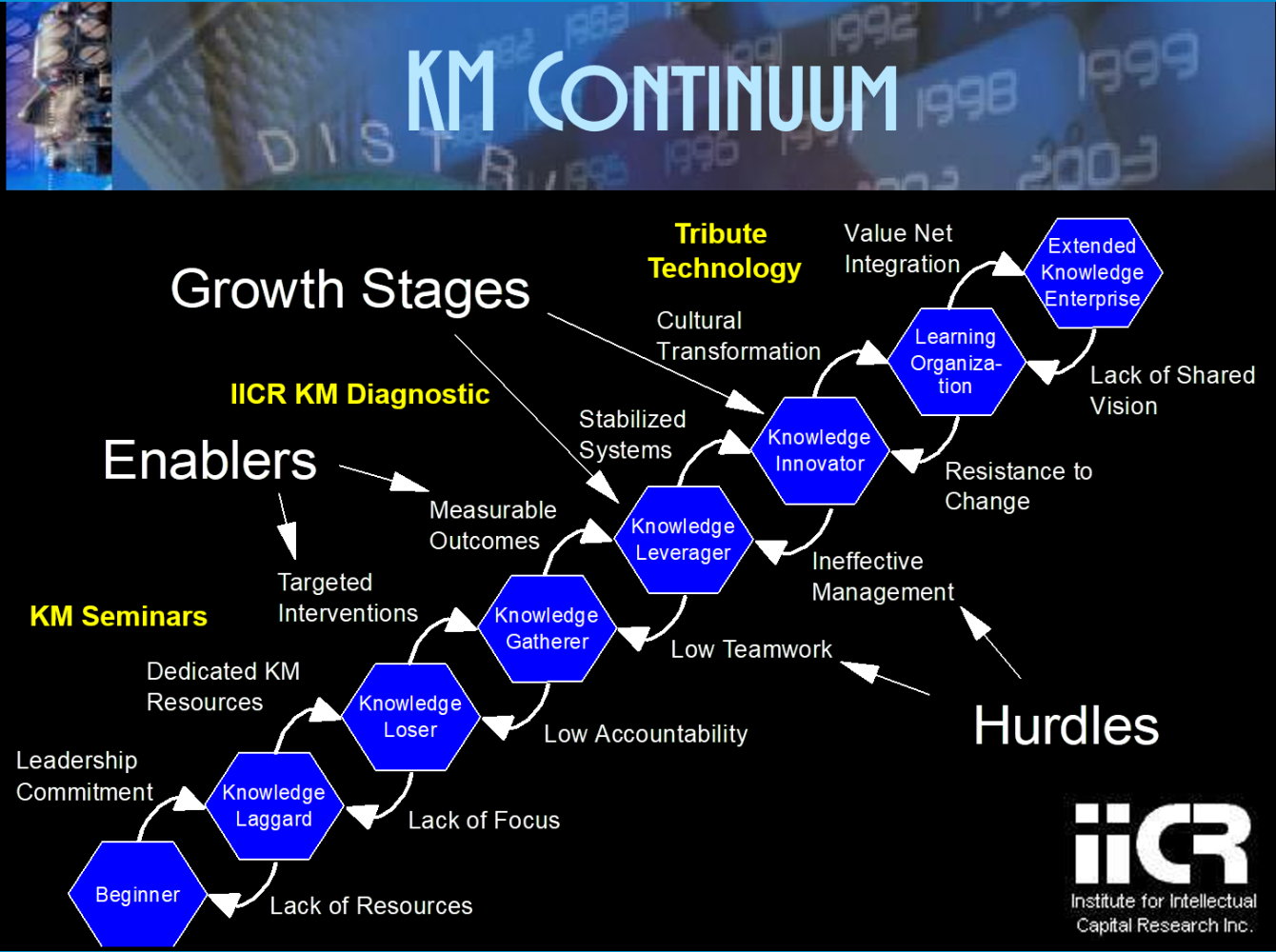
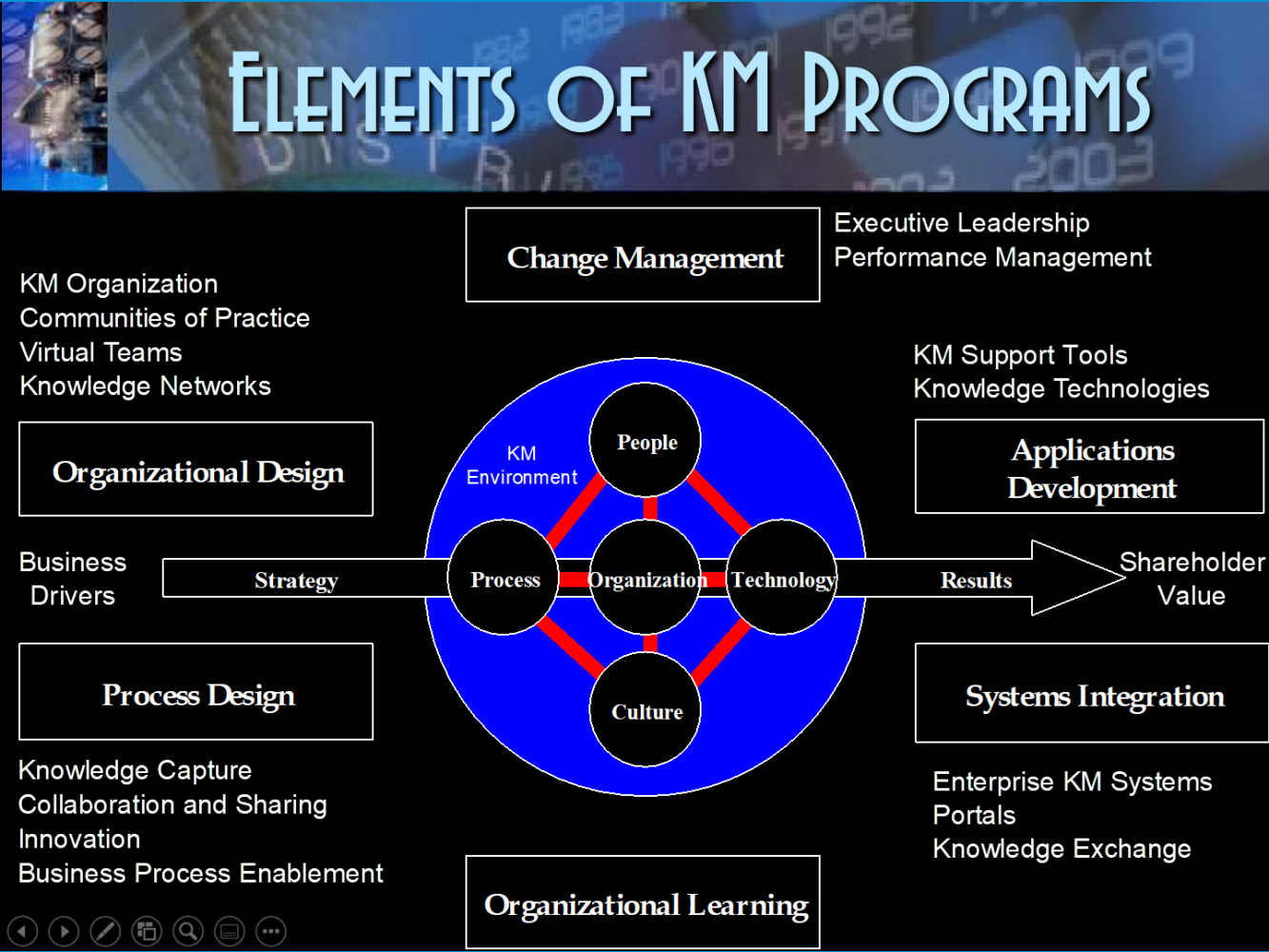
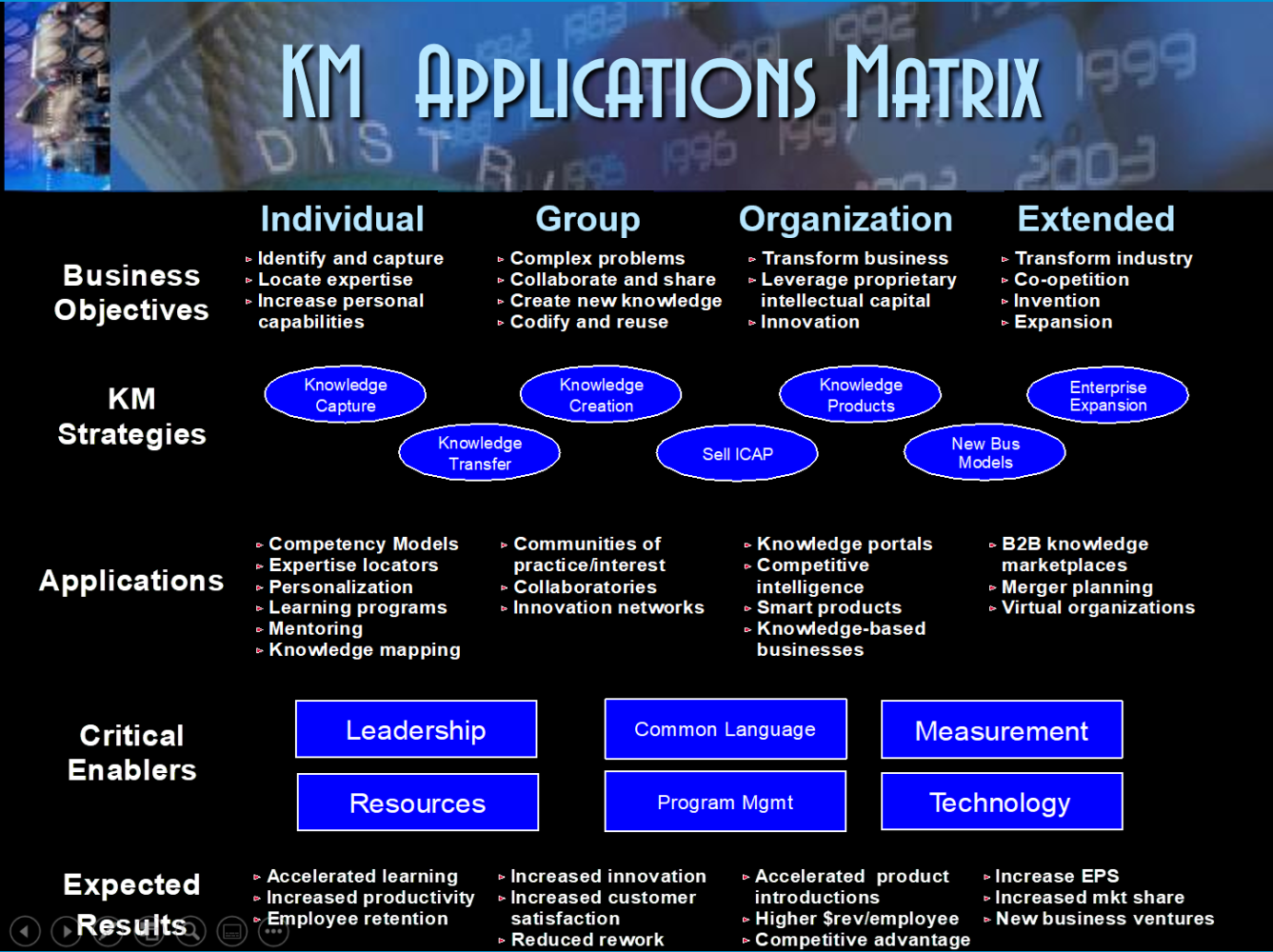
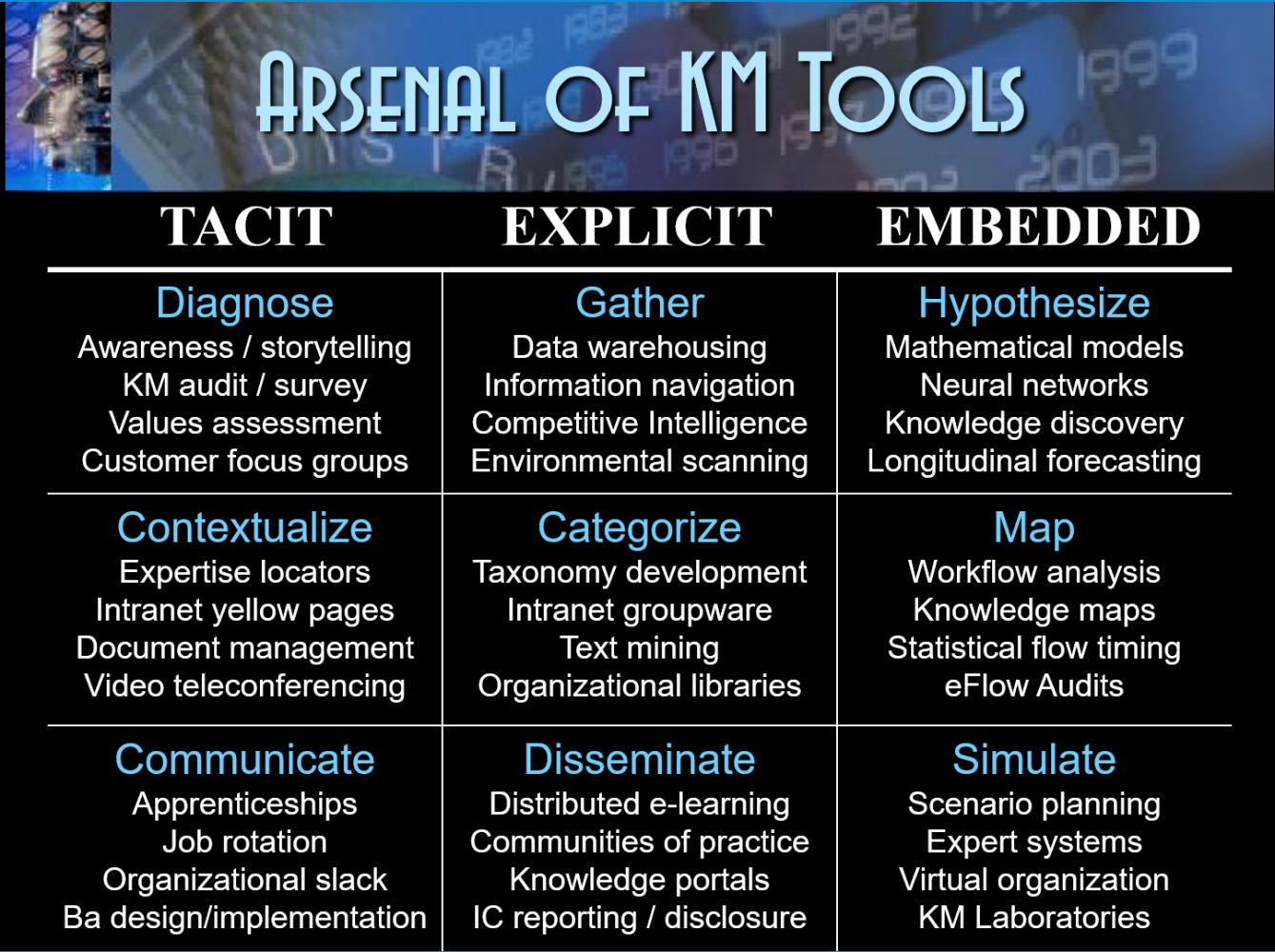
Intellectual Capital: Five Ways to Keep it From Walking Out the Door
- PLAN – Succession planning must be implemented for all employees in the organization. That includes everyone from the CEO down to the call-centre representative. If an employee has a known trajectory for departure—retirement, back to school, maternity leave—a replacement hire must be made early enough to allow for job shadowing to occur. The rule of thumb is to allow one week of job shadowing for each year of employment. Indeed, there is a financial cost for having two people do the same job for a short period. But, the opportunity cost of not having knowledge continuity in place is even worse.
- DEVELOP – Develop a corporate online Yellow Pages. In other words, find out and classify who knows what. In this exercise, the talent and expertise of every single employee should be documented in a searchable file that resides on the company’s intranet. This way, when you are looking for important information or a key contact, you can just type in a search term and zap, you know exactly who to go to for the answer. Don’t forget, we typically waste more than 25 per cent of our time at work looking for answers to questions that someone else in the company already has.
- COMMUNICATE – Exit interviews are a must for every single departing employee. The biggest mistake companies make is having someone from HR conduct the interview. The best way is to hire an independent firm to conduct the interview by phone and collect further information using an online survey. The departing employee will be more honest with an interviewer they have no ties to and at the same time, you protect sensitive data. Once the vendor collects information from five or more departing employees, results can be reported back to the organization in aggregate, thereby ensuring confidentiality. And don’t forget that the most important question to ask in an exit interview is: what do you know that nobody else in the firm knows?
- CREATE – A very hot trend right now is to develop an alumni database of all former employees. Universities do it, so why can’t businesses? These past employees can become a huge source of intellectual capital for your organization. You can use them for focus groups, as test clients, as secret shoppers and you can even bounce ideas off them before new services hit the market. By maintaining a useful relationship with alumni, they might come back again in the future as employees.
- ENFORCE – An enormous risk for knowledge-intensive organizations is the threat of departing employees taking critical files with them (e.g., client lists, blueprints, marketing plans). Information ownership and usage policies must be communicated to current employees so they clearly understand who owns your company’s data. It is important for this issue to be addressed explicitly during the orientation of new employees. Have in your arsenal non-competition and non-solicitation agreements or clauses in employment contracts and when employees join your firm, make them sign it. At the end of the day, it’s your intellectual capital that can make or break your organization’s performance. Be sure to safeguard it.
Initiatives to Strategically Manage Intellectual Capital
- Conduct an initial intellectual capital audit. Such an examination may include designing and administering a diagnostic survey using Likert-type scales to get a snapshot of the benchmark level of intellectual capital in existence.
- Make knowledge management a requirement in evaluating each employee and assign personal targets for intellectual capital development. For example, have each employee learn something the organization currently does not know and document that knowledge into a searchable database or corporate yellow pages.
- Formally define the role of knowledge in your business and in your industry. Find and secure the greatest resources for intellectual capital inside and outside your firm from such sources as industry associations, academia, customers, suppliers, and government. Also support the marketing department with a competitive intelligence strategy.
- Recruit a leader responsible for developing intellectual capital. This person must have an integrated background in human resources, strategy, and IT. A Chief Knowledge Officer is different than a Chief Learning Officer: The former is responsible for how human capital can be leveraged for sustainable advantage; the latter is responsible for developing and implementing the corporate training strategy.
- Classify your intellectual portfolio by producing a knowledge map of your organization. Determine where knowledge resides, in what specific people as well as systems. For example, create a central database in which all project-based information can be accumulated and accessed.
- Use information systems and information-sharing tools that aid in knowledge exchange and codifying. Such tools include groupware — message boards, video-teleconferencing, intranets, knowledge exchanges, corporate universities, and storytelling.
- Send employees to conferences and trade shows. Do not pay for their travel unless they share what they learned with the rest of the organization when they return. Increase ROI on training.
- Consistently conduct intellectual capital audits to re-evaluate the organization’s knowledge accumulation. Use monetary values if possible, but do not be afraid to develop customized indexes and metrics.
- Identify gaps that must be filled based on weaknesses relative to competitors, customers, suppliers, and best practices. Start benchmarking your turnover ratios and training investment rates compared with your competitors.
- Assemble the organization’s knowledge portfolio into an intellectual capital addendum to the annual report.

Stan Garfield
Lucidea presents “Profiles in Knowledge Part One” the first of four free webinars based on Stan Garfield’s upcoming book, Profiles in Knowledge. He will detail five categories associated with the discipline of knowledge management, including AI and taxonomy, and spotlight KM practitioners with substantive impact in these areas. Join us on Thursday, March 28 at 11 a.m. Pacific, 2 p.m. Eastern. Register now!
Never miss another post. Subscribe today!
Similar Posts
Lucidea’s Lens: Knowledge Management Thought Leaders Part 79 – David Garvin
KM expert David Garvin was a proponent of organizational learning to counter unpredictability in market forces and technology advances.
Lucidea’s Lens: Knowledge Management Thought Leaders Part 78 – Carl Frappaolo
KM expert Carl Frappaolo was the creator of Delphi’s Knowledge Management Methodology (KM2)
Lucidea’s Lens: Knowledge Management Thought Leaders Part 77 – Leif Edvinsson
Leif Edvinsson, Professor Emeritus at Lund University in Sweden, specializes in Intellectual Capital Management of Enterprises, Cities, and Nations
Lucidea’s Lens: Knowledge Management Thought Leaders Part 76 – Seth Earley
Seth Earley works in cognitive computing, knowledge engineering, data management systems, taxonomy, ontology, and metadata governance strategies.

Leave a Comment
Comments are reviewed and must adhere to our comments policy.
0 Comments